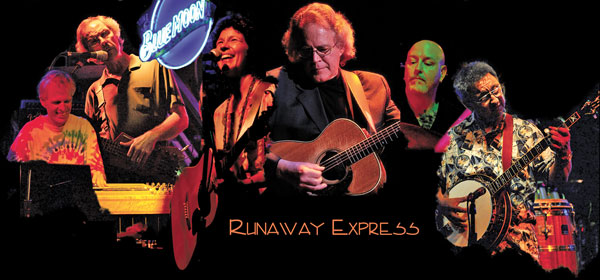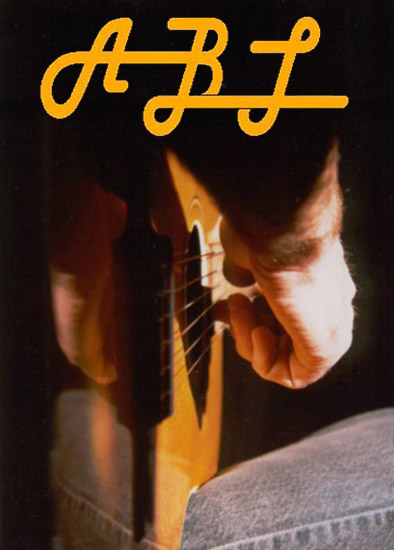You might be the greatest songwriter in the world. And, your live act could be going over badly, or not at all.
Writing great songs is not all that is needed to charm the audience and make them love you. Being a hot instrumentalist might help, but you still need more. Looks, clothes, and great hair might help, and you still need more.
So here are some comments on performing and some things I've learned by observation and, sometimes, the hard way.
- Know your material. If you have to stop to read a chord chart and if you mumble through the lyrics, or back up and do the lines over because you forgot your latest changes, the audience will not like your song. Make sure your rhthm, pitch, and pronunciation are as good as possible. In other words, practice, practice, practice.
"It's important to tune for this song. It's
not like the other ones." — Austin Lounge Lizards
"We suffered for our music. Now, it's your
turn." — Sam Bush
"We tune because you care." - Herb Pedersen
"Try to err on the side of perfection." — Jim Ratts of Runaway Express 
- Use cover songs through-out your sets. It's really hard for the audience to listen to one new (read: original) song after another. There's a reason that people listen to the same songs on the radio over and over, and go to live concerts to hear their favorite artists perform the same songs over and over: they like listening to familiar material.
"That afternoon in the ward I played 'Lady of Spain,'
and as I played, my fear passed away. In its place came
a strange elation. The men listened, and their listening
was of a different order from what I felt at recitals.
They too might have played the tune, the sentimental
quality of it giving way to a passion that went into the
depths of all music and included my mother in it, drew
her into it. Lady of Spain! When I saw her,
that gray lady, that dark-eyed Nazarene atremble in the
shadows of shades of men, it was as if I saw all the
women I would love. This was music, this was the life
within, this was the love I would sell my soul to
possess. The air that set the reeds to quaver, God help
me, might have been my own breath." — Robert Taylor Jr.
- Play song that are in different tempos, different keys, and different rhythms. If all your songs have the same rhythm, tempo and key, your audience will think they're listening to the same song.
"Slim ... informed Elmer that, with the Shepherd Boys, musicianship was a lost cause. The way Wendell hammed it up, you couldn't tell the difference between 'Old Rugged Cross' and 'Into a Tent Where a Gypsy Boy Lay,' it was all the same to him, and since Wendell sang almost everything in the key of F, Slim used the same fingering and the same licks on every song—it was like cutting two-by-fours at a sawmill. Well, Elmer said, if that was how he felt, there were plenty of sawmills up around Ruseau where he could get a job." — Garrison Keillor, WLT: A Radio Romance
- Engage the audience and keep them interested. Ask them questions. Make them laugh. Don't use the same old intro for each song: "I wrote this song because..." or "I really like this song because..."
"There came a moment in the middle of the song when he
suddenly felt every heartbeat in the room and after
that he never forgot that he was part of something much
bigger" — Brian Andreas
- Pick up your tempo. You might think it's too fast for the emotion of the song, but people will not like the song if it drags. A slightly faster tempo will add excitement.
- Keep your songs short. If you're not Bob Dylan or James McMurtry, keep your songs under two and half to three minutes. They'll like you more for three minutes than they will for five minutes.
- If you don't play instrumental breaks, don't strum through the part where an instrumental break should be. If you need a pause in your song to reflect the passage of time or to give your audience and chance to think about the lyrics, try keeping it to a few measures, not an entire chorus.
"[Performing] is a whole lot easier when you have an
audience." — Duncan Tuck
"The audience is like my instrument. It's not just me up
there, it's collaborative." — Bobby McFerrin
- Do sing-alongs. Teach the audience their part before the song starts and praise them at the end. Rumor has it that Gordon Lightfoot once stopped in the middle of the audience to tell the audience to shut up, that they were ruining his song. Don't do that. Don't even think it. People won't sing along if the dislike your song. They'll remember it if they sing-along.
'"There's a certain sense of ownership that the fans
have over you....The thing is, it's all good. You just
have to get used to it. If somebody comes up to you
while you're eating dinner or something, it's kind of
like, 'Well, I asked for it.' It's much better than the
alternative—nobody caring and nobody buying your music.
The point is to try to just realize that these people
are really excited, and that's a good thing. You want
them to be that way." — Carrie Underwood
- Use different engaging techniques before or with each song. Variety keeps people interested.
"What I remember best from those times is the music
itself. When it succeded, we took hold of the audience's
attention, working it from a distracted, unshaped mass
into spun beauty, passing the fine strands back and
forth until we wove together something grander, not only
music but memory, too—the particulars of past and
present, stretched taut across a loom of timeless
ideals. Harmony. Symmetry. Order." — Andromeda
Romano-Lax
"The only frustrating aspect was that the set list
remained unchanged throughout the tour, despite the
rich heritage of numbers to choose from." — Glenn
Covey & Ian Russell
- Don't explain the meaning of your song before you perform it. Either the song stands alone, or it fails. Songs on the radio don't come with explanations. If you want to give background for the song (inspiration, explanation), put it on your web site or the CD insert. The folks that want or need that info will look for it, if they like the song.
- Avoid bragging and name dropping, unless Paul McCartney recorded your song on his last CD, Bonnie Raitt performed your song at the Grammy's or the President invited you to the White House because he wanted to hear your latest song live. And even then, keep all that to a minimum. And don't mention anything that might happen, but hasn't happened yet, because it might not happen.
"I knew when I was in high school that I wanted a job
where they'd applaud if I showed up." - Cheryl
Wheeler
- Have fun. Love your songs. If you had a bad day, leave it off-stage. The audience will not have a good time if you're not having a good time.
"The public hears, but it also sees. So
it is very important that what the public sees is in the
correct relation to what it hears." — Fernando
Grillo
more performing tips
Thanks for visiting AcousticByLines. |


